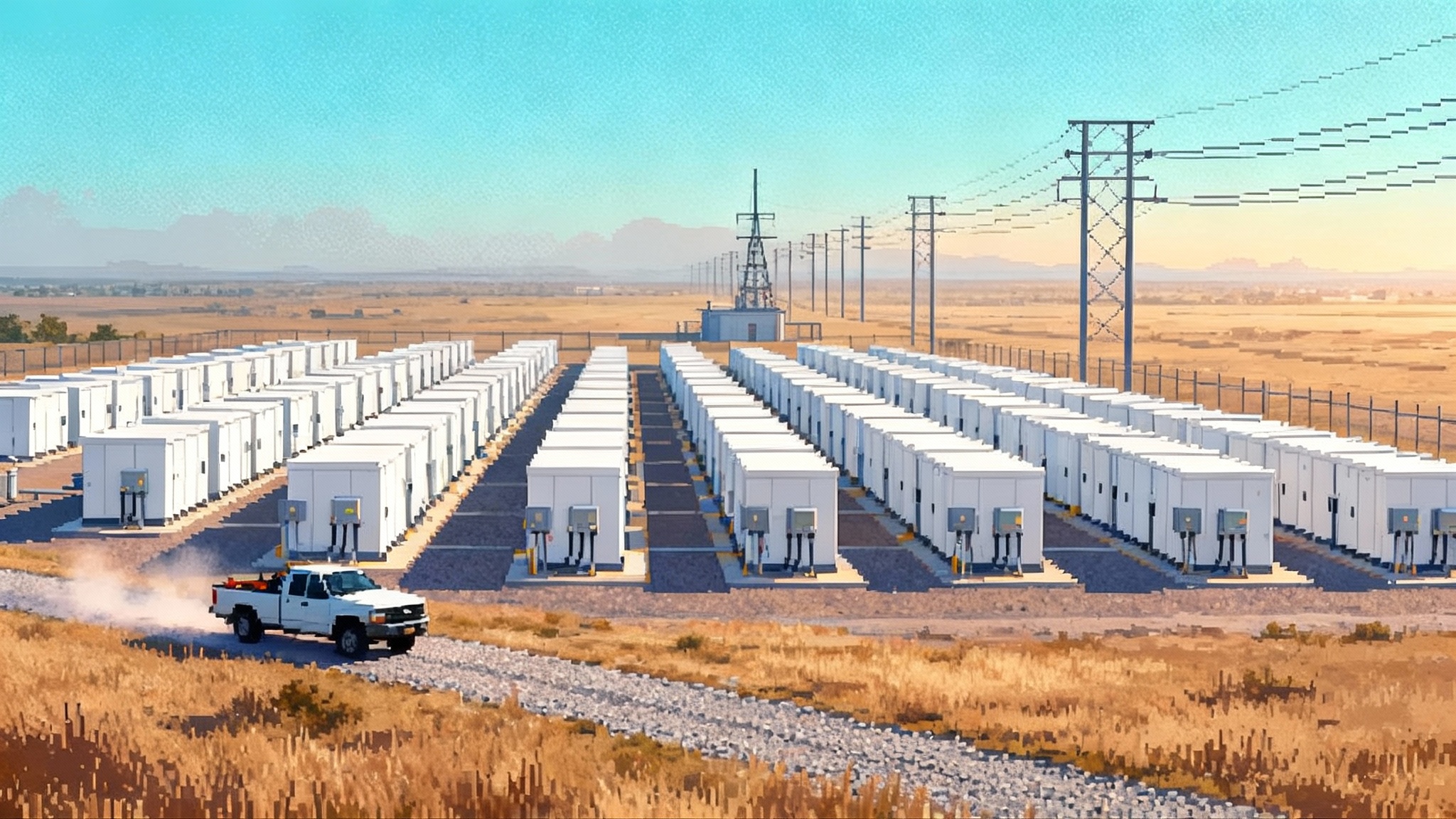Transmission’s make-or-break year starts with FERC 1920-A
FERC Order 1920-A starts the clock on 20-year regional transmission planning. See who files when, how states can lock cost allocation, which projects are likely to move first, and how to de-risk bids over the next 6 to 18 months.

The clock just started
If you work on transmission, your next 18 months now fit on a wall calendar. Order 1920-A, FERC’s rehearing update to its long-term transmission rule, turned planning from an academic exercise into a timed event. Compliance dates are set by region and the first six months are reserved for states to hash out how to split costs. The punchline is simple. No cost allocation, no project selection.
Two facts frame the urgency. First, transmission providers must file new regional planning and cost allocation methods on the dates FERC now lists by region on its FERC compliance calendar by region. Second, states get a defined engagement window to negotiate cost sharing and can ask for up to six more months. That gives you a real countdown for every market.
This article decodes what must be filed in the next 6 to 18 months, flags the first projects most likely to clear cost allocation and permitting, explains how new state leverage reshapes siting, and ends with a practical playbook for investors and operators.
What the rules now require, in plain terms
Think of the planning process like a set of races that run in lanes but finish at the same tape. The lanes are scenarios, benefits, selection criteria, and cost allocation.
- Long-term scenarios. Each region must plan for at least three distinct 20-year outlooks that incorporate known drivers. The inputs cannot be handwaving. They must reflect the best available data for load growth, old asset replacement, resource portfolios, extreme weather, and demand-side options, including storage trends shaped by FEOC rules.
- Measured benefits. Regions must quantify a core set of benefits when scoring projects. These include avoided local reliability builds, production cost savings, reduced losses, outage congestion impacts, extreme weather resilience, and capacity cost savings. Benefits tell you who gains and by how much.
- Selection and transparency. Transmission providers must put their evaluation process in their tariffs, run open stakeholder meetings, and be clear about when a project crosses from candidate to selected for cost allocation.
- Right-sizing. If an aging line needs replacement, planners must look at whether they can increase capacity in the same corridor rather than simply rebuild old specs. Incumbent utilities retain the right to build these right-sized replacements, which matters for speed and supply chains.
- State engagement on cost allocation. Each region must hold a six-month state engagement period so relevant state entities can propose an ex ante cost allocation or a voluntary State Agreement Process. If states ask, FERC can extend this period by up to six months and will adjust filing deadlines accordingly. FERC’s 2025 update also affirms that states can ask planners to run additional scenarios that help them assess cost responsibility. See the tools gathered in FERC’s 1920-B state primer.
The upshot. The technical work and the political work now happen on a synchronized timeline. Markets that arrive with a credible state-backed cost split will pick winners first.
The next 6 to 18 months: who files what and when
Below are the filing windows from October 2025 forward. These are the dates that lock what your teams must deliver.
- December 12, 2025. First compliance filings for CAISO, PJM, NorthernGrid, and WestConnect. These filings must include scenario design, benefit metrics, project selection criteria, and a default cost allocation, plus documentation of the state engagement process. Interregional compliance for these Western regions follows on February 12, 2026.
- April 30, 2026. NYISO files its first compliance package. Its interregional coordination filing arrives in mid 2027.
- June 12, 2026. First compliance filings for MISO, SPP, SERTP, SCRTP, and FRCC. Interregional filings for the Southeast and Florida are due August 12, 2026, while MISO and SPP interregional filings land December 12, 2026.
- December 12, 2026. PJM’s interregional filing coordinated with SERTP and MISO. Additional PJM coordination with NYISO and ISO New England runs into mid 2027.
- June 14, 2027. ISO New England’s first and interregional filings, and NYISO’s interregional filing.
What each actor owes the process:
-
States and state energy offices
- Formally designate your relevant state entity and decision rules. Decide if you will use existing regional bodies such as OPSI, OMS, or NESCOE, or set a separate voting method just for this rule.
- Use the engagement period to negotiate an ex ante cost allocation or a State Agreement Process. If needed, request the extension early and in writing so your region’s deadline adjusts.
- Ask planners for additional scenarios that reveal who causes costs and who gets benefits in plain numbers. For example, a baseline scenario that excludes policy-driven resources, and a policy-on scenario that includes them. This is your leverage to assign costs to cost causers.
- Identify and prioritize right-sizing corridors and cross-border ties your state is willing to pay for. Say it clearly. Ambiguity equals delay.
-
Transmission providers in RTOs and non-RTO planning groups
- File the tariff changes on time. That means detailed scenario inputs, benefit measurement, selection points, and a default cost allocation method that applies if states do not agree.
- Publish a transparent list of aging assets and right-sizing candidates. If you want predictable capital plans, give developers and manufacturers a long runway.
- Document the state engagement process. Do not improvise. Record meetings, options discussed, and points of agreement or disagreement for the FERC record.
- Align interregional filings with neighbors. Joint benefits and portfolio selections across borders will be the fastest path to scale.
-
Developers and independent transmission companies
- Submit portfolio proposals into regional windows that match the benefit metrics on the page. Frame projects as solutions to identified needs in the scenarios, not as generic lines.
- Provide route alternatives that minimize new right-of-way. Emphasize rebuilds and collocation in rail, highway, or pipeline corridors where feasible.
- Package community, labor, and Tribal commitments as binding parts of proposals. Order 1977 on backstop siting expects serious engagement. Treat it as a design requirement, not a press release.
First movers: projects with a straight path to selection
Several project types now enjoy a head start because they check three boxes at once. They score in the required benefits, fit the new cost allocation politics, and avoid the worst permitting traps.
- Right-sized rebuilds in existing corridors
The fastest miles to build are often the miles you already own. Replacing 115 to 161 kilovolt wood structures with 230 to 345 kilovolt steel in the same right-of-way can unlock large transfer gains with modest opposition. Incumbent utilities have the right to build these right-sized replacements, supply chains know the hardware, and the benefits are concentrated in the host region. Expect large utilities in PJM West and Midwest corridors, parts of MISO North and Central, and the Southern Company territories to bring forward rebuild portfolios that bundle many miles across states. Federal financing activity already points this way, with major utilities publicly preparing multi-state rebuild programs as a first wave. The key is packaging these as multi-year portfolios that planners can select in a single decision.
Why these clear cost allocation quickly. The benefits closely match the local load that pays. The avoided rebuild costs and reliability benefits score well, and states can agree that host customers should fund most of the upgrade when the capacity is sized to local needs.
- High-voltage direct current seams projects
Seams projects connect regional grids at weak borders and share benefits across two planning regions. Think of converters near existing 345 or 500 kilovolt hubs, a 2 to 3 gigawatt direct current link along rail or highway corridors, and a short list of substation upgrades on each side. The prize is large. Production cost savings and outage congestion relief accrue on both ends in every scenario with high load growth and variable generation.
What makes them more viable now. With the state engagement period, pairs of states that straddle a seam can negotiate a cost split before planners select the project. That reduces the traditional finger pointing. In the Midwest and Central Plains, candidates that tie MISO and SPP through Missouri, Kansas, or Arkansas have favorable geography, strong benefits in both regions, and converters sited near existing substations. In the Mid-Atlantic and Great Lakes, underground direct current along rail corridors between PJM and MISO has a clearer path because it reduces landowner conflict and concentrates converter impacts at industrial sites.
- Interregional ties anchored by right-sizing at each end
This is the hybrid that planners and regulators like in 2025. Bundle a direct current tie with right-sized rebuilds on each side so that each host state funds and receives obvious local benefits. The portfolio scores across benefits and gives each state something in return for accepting a multi-state line.
Places to watch in the next cycle. NorthernGrid and WestConnect have early filing dates, and both include utilities with aging 230 kilovolt corridors that need renewal. Pairing those rebuilds with a new hub-to-hub tie across Utah, Nevada, or Arizona can convert a set of local fixes into a regional solution. In the East, PJM’s early filing date puts it in the first selection window for either right-sizing portfolios or a seams project with MISO, coordinated with late 2026 interregional filings.
How state leverage changes siting
Order 1920-A and the 2025 clarifications shift bargaining power to the states that are willing to put real money on the table. States can ask for scenarios that isolate the costs of policy-driven projects. Under those scenarios, the added costs can be assigned to the states that are driving them. That means three very practical changes in siting strategy.
- Route through participants, not bystanders. If a non-participating state will not agree to pay, and planners can satisfy needs by routing through cooperating neighbors, the non-participating state loses leverage. Expect more parallel paths that avoid reluctant jurisdictions where geography allows.
- Make portfolios that match who pays to who gains. Linking a cross-border tie with right-sized local rebuilds gives participating states concrete reliability and outage benefits at home. That makes state approvals easier and provides a defensible record for cost allocation.
- Use the engagement period to secure written commitments. Memorandums of understanding that specify cost shares, hosting responsibilities, and permitting milestones will carry weight when planners select projects and when FERC reviews filings.
The result is simple. The new rule reduces free riding and rewards early coalition building.
The investor and operator playbook
Here is a checklist to build bankable bids and get to notice to proceed faster.
- Start with the benefit formula, not the route. Reverse engineer your project from the region’s benefit metrics. Produce a data room that shows production cost savings in each scenario, outage congestion relief on named flowgates, and avoided local rebuilds with engineering proof. If your benefits map to the tariff, planners can select your project without guesswork.
- Align cost allocation early. Offer states a State Agreement Process draft with two options. A simple percentage split tied to benefit ratios, and a fallback portfolio that adds local rebuilds until each state’s benefits and costs match. This lowers the risk that planners default to a weaker ex ante method.
- Design for right-of-way realism. Prefer rebuilds and collocation. Where new routes are unavoidable, put as many miles as possible in rail, highway, and pipeline corridors. Use underground direct current selectively in high-conflict segments. A smaller surface footprint buys speed even if capex goes up.
- Treat community and Tribal commitments as part of the engineering package. Budget for early cultural resource surveys, binding community benefits agreements, local workforce training, and a credible plan for wildfire and vegetation management. This is not just good practice. It reduces litigation risk and eases federal backstop siting if you need it.
- Lock in supply and labor early. Book steel, conductors, transformers, and converter station components with frame agreements. Tier your procurement across American, Canadian, and allied sources to survive a single supplier delay. Pair that with project labor agreements and apprenticeship pipelines to guarantee crews when your notice to proceed lands.
- Use federal financing to smooth rate impacts. The Department of Energy’s Loan Programs Office, the Transmission Facilitation Program, and the Grid Resilience and Innovation Partnerships grants can lower the cost of capital or act as an anchor customer for capacity. Offer states a plan that uses federal dollars to temper near-term rate effects while preserving long-term savings.
- Build ROFR partnerships where right-sizing is likely. If an incumbent utility has the right to build a right-sized replacement, approach them with a joint development agreement that swaps your development machine and converter expertise for their local execution and rate base. It is faster than litigating developer selection.
- Stage portfolios to manage permitting risk. Break a mega-project into independently useful segments. Each segment should deliver measurable benefits on its own. If one segment stalls in permitting, the rest can proceed and still satisfy the selection case that planners approved.
- Prepare for interregional politics. Where two regions must agree, pre-arrange a common set of assumptions for scenarios and a shared benefits study with both planning staffs. Submit the same numbers to both regions at the same time. Synchronization beats serial persuasion.
Common pitfalls to avoid
- Hand-wavy benefits. If your proposal relies on generic claims about reliability and resilience, it will lose to a proposal that ties each benefit to a named constraint or a specific aging asset replacement.
- Ignoring the engagement period. If you try to sell a big project without a state cost split in writing, you are asking planners to pick a fight that they will not pick for you.
- Treating interregional coordination as an afterthought. If your project crosses a seam, your submission must satisfy both regions’ selection criteria. Two yes votes are required. One is not enough.
- Last-minute stakeholder work. Come to the table with data products ready for planners and consumer advocates to test. Faster trust equals faster selection.
What success looks like by mid 2027
By mid 2027, early regions will have selected portfolios that combine right-sizing and one or two high-value seams projects. States that backed a cost formula will see projects move first. Incumbent utilities will have multi-year rebuild programs under construction. Independent developers will be leading a handful of interregional direct current projects where they matched route discipline with state-backed cost splits. Regions that delayed cost allocation will still be relitigating benefits.
The stakes are not abstract. Rising load from data centers and industrial growth, aging 1960s lines, and extreme weather do not wait. See how this demand spike is unfolding in AI-driven load growth in 2025 and how hydrogen policy will steer siting in where clean hydrogen will build. The planning clock is running, and the first buzzer sounds this winter when the earliest filings land. Teams that build around clear benefits, negotiated cost shares, and realistic routes will win selection and financing while everyone else is still arguing over the starting gun.
Bottom line
Treat 1920-A’s planning reforms and the 2025 updates as a timed market entry. Know your region’s filing date. Use the state window to harden cost splits. Lead with right-sizing where you can, and deploy direct current at the seams where it delivers shared savings. Assemble portfolios that give each state tangible benefits at home. If you do that, your projects will clear cost allocation, move through permitting, and start construction on a far faster track than your competition.








